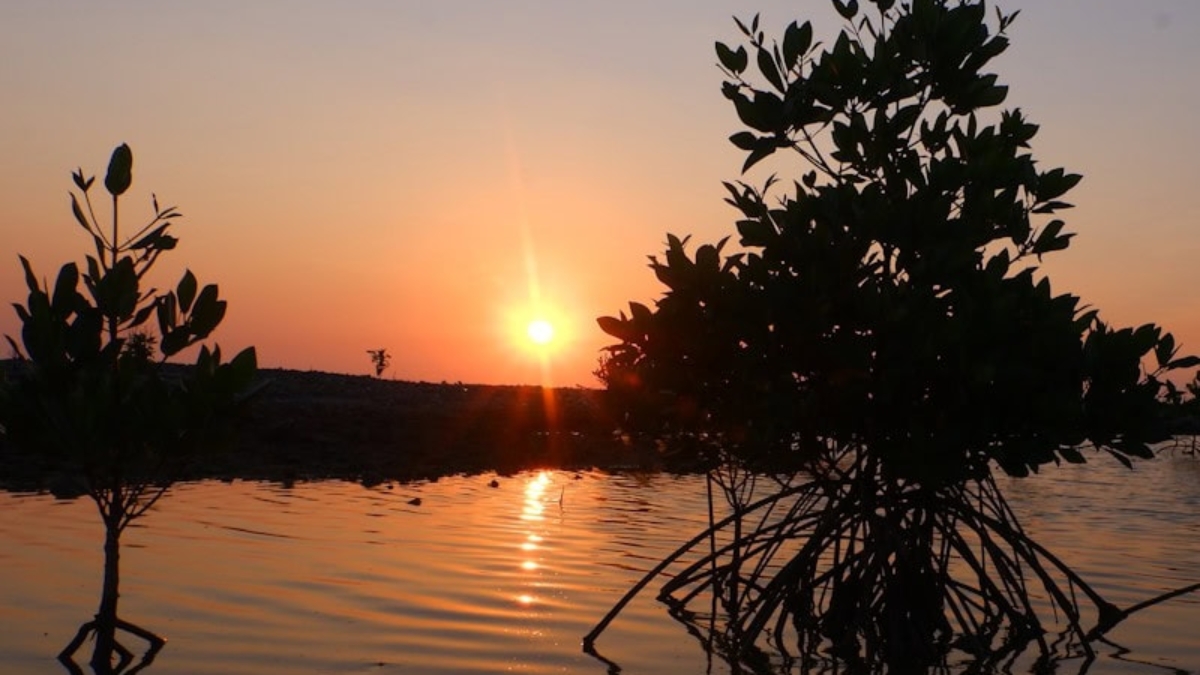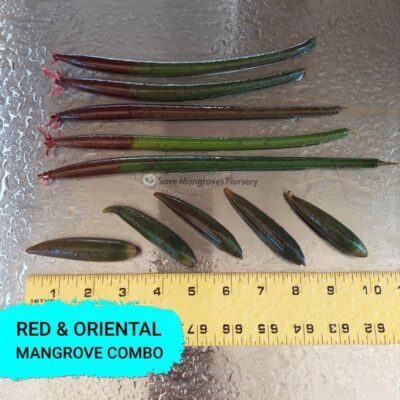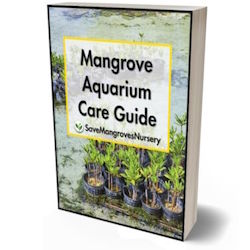Mangroves are fascinating plants with unique adaptations that allow them to thrive in challenging environments. But when it comes to growing them in an aquarium, a common question arises: Do mangroves grow better in saltwater or freshwater? The answer isn’t as straightforward as you might think. Let’s dive into the details to explore the conditions that best suit these remarkable plants.
Understanding Mangrove Adaptations
Mangroves are naturally found in coastal environments where they face harsh conditions, including fluctuating salinity levels. They have developed specialized adaptations to survive in saltwater environments, such as salt excretion mechanisms and specialized root systems. But what happens when they are placed in freshwater?
Saltwater: The Natural Habitat
Mangroves, particularly the Red Mangrove (Rhizophora mangle), are most commonly found in saltwater or brackish environments. They are known for their ability to filter out salt, allowing them to survive and even thrive in salty waters where most plants would perish.
✅ Good: Growing mangroves in saltwater mimics their natural habitat, providing the ideal conditions for them to thrive.
❌ Bad: Saltwater environments require more maintenance, including monitoring salinity levels and ensuring proper water quality.
Fun Fact
🛑 Did you know? Mangroves can excrete excess salt through special glands in their leaves, which is why you might notice salt crystals on the surface of their leaves in a saltwater environment!
Freshwater: A Viable Alternative?
While mangroves are naturally adapted to saltwater, they can also survive in freshwater environments. However, the growth rate and overall health of the plant may differ from that in a saltwater environment.
✅ Good: Freshwater environments are easier to maintain in an aquarium setting, with fewer complications related to salinity levels.
❌ Bad: Mangroves may not grow as vigorously in freshwater, and they may lack some of the robust characteristics seen in saltwater-grown plants.
The Role of Brackish Water
Brackish water, a mix of saltwater and freshwater, provides a middle ground that can be ideal for mangroves. In fact, many aquarists find that mangroves grow exceptionally well in brackish water, combining the benefits of both environments.
✅ Good: Brackish water offers the perfect balance, allowing mangroves to thrive while minimizing maintenance challenges.
❌ Bad: Creating and maintaining brackish water requires careful monitoring and adjustments, which can be more complex than managing freshwater.
Personal Experience: Growing Mangroves in My Aquarium
As an aquarium enthusiast, I’ve had the pleasure of experimenting with growing mangroves in various water conditions. Initially, I started with freshwater, thinking it would be the easiest to manage. The mangroves grew, but their progress was slow, and the leaves didn’t have that vibrant green hue I was hoping for.
Curious about the difference, I gradually transitioned my tank to a brackish setup. The results were impressive! The mangroves seemed to perk up, and their growth rate increased noticeably. It was clear to me that while they could survive in freshwater, they truly thrived in a more saline environment.
Fun Fact
🛑 Did you know? Mangrove roots play a crucial role in stabilizing coastal ecosystems by trapping sediments and reducing coastal erosion. In an aquarium, these roots can create a natural filtration system, improving water quality.
Pros and Cons of Different Water Types
Saltwater
✅ Good: Mimics natural habitat, encourages robust growth, and provides vibrant leaf color.
❌ Bad: Requires careful maintenance and monitoring of salinity levels.
Freshwater
✅ Good: Easier to maintain, suitable for beginners, and requires less specialized equipment.
❌ Bad: Slower growth, less vibrant appearance, and potential health issues over time.
Brackish Water
✅ Good: Balanced environment, promotes healthy growth, and offers a compromise between saltwater and freshwater.
❌ Bad: More complex to maintain, requires careful monitoring and adjustments.
Making the Right Choice for Your Aquarium
Choosing the right water type for growing mangroves in your aquarium depends on several factors, including your experience level, the resources available, and the specific goals you have for your tank. If you’re looking to replicate the natural conditions as closely as possible, saltwater or brackish water may be the best choice. However, if you’re just starting out and want to keep things simple, freshwater can still work, albeit with some limitations.
Fun Fact
🛑 Did you know? Mangroves are not only vital for coastal ecosystems but also play a role in carbon sequestration, helping to mitigate climate change by absorbing carbon dioxide from the atmosphere.
Conclusion: What’s Best for Your Mangroves?
Ultimately, the choice between saltwater, freshwater, and brackish water comes down to your personal preferences and the specific needs of your aquarium. At Save Mangroves Nursery, we provide healthy Live Red Mangrove Plants that are ready to add to and naturally filter your Saltwater, Freshwater, or Brackish Aquarium tanks. Whether you’re a seasoned aquarist or just starting out, our mangroves are shipped out to all 50 states daily, ensuring that you can enjoy the beauty and benefits of these incredible plants no matter where you live.
So, are you ready to grow mangroves in your aquarium? Whether you choose saltwater, freshwater, or brackish water, we’re here to help you succeed. Happy planting!
Best seller products
-
18”-24” Red Mangroves With Roots & 2-4 Leaves
Price range: $34.99 through $87.99 -
10”-14” Red Mangroves With Roots & 2-4 Leaves
Price range: $19.99 through $47.99 -
28″ Red Mangrove Tree – Fully Mature Plant
Price range: $0.00 through $230.00 -
[RARE] Orange Oriental Mangroves Propagule Seeds
Price range: $19.99 through $79.99 -
30″ Red Mangrove Tree – Fully Mature Plant
Price range: $0.00 through $180.00 -
Red & Oriental Mangrove Combo Bundle
Price range: $29.99 through $44.99
 Cart is empty
Cart is empty 




![[RARE] Orange Oriental Mangroves Propagule Seeds](https://savemangroves.com/wp-content/uploads/2025/07/Oriental-Mangrove-Seeds-Save-Mangroves-Nursery-400x400.jpg)



Add a Comment
You must be logged in to post a comment